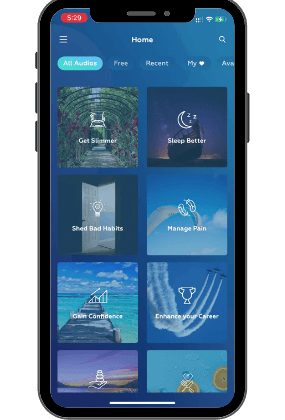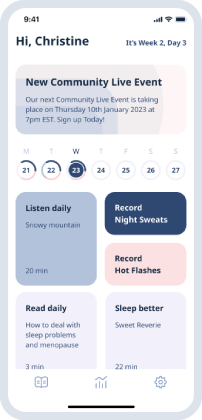
Online Hypnosis to Quit Smoking and Other Bad Habits

Winning with Hypnosis for Athletic Performance
Table of Contents
Have you ever driven along a long stretch of road and found yourself zoning out, daydreaming, or becoming so lost in thought that the distance seemingly melted away? You might have discovered yourself at your destination faster than you imagined. You might have even worried that you fell asleep at the wheel. Were you distracted or simply daydreamed the time away? What you experienced is common. Some people call it “autopilot,” and it does not just occur on highways. In cities, you might find yourself driving along familiar routes without noticing signs or traffic signals. While the phenomenon can be disorienting, it is natural. It is called highway hypnosis, and here is what you need to know to better understand it and yourself.
What is Highway Self-Hypnosis?
Researchers studying the phenomenon used driving simulators. They found that drivers on long, monotonous roads needed less effort to drive. They shifted towards automatic processes and were less alert with less arousal. They also had an increase in brain alpha activity. Brain alpha waves occur when people are relaxed and not focusing on anything in particular. This is much like what happens during the self-hypnosis experience. Stanford scientists used MRIs to understand the parts of the brain that are involved in the process, determining that there was a decrease in activity in a part of the brain’s salience network. People would become so absorbed that they did not worry about anything else.
When you lose track of time on the road, your first instinct is that you drifted off to sleep while driving. You might feel a little panic-stricken but take a deep breath. Your subconscious mind has taken the wheel. The subconscious mind is powerful, controlling many processes throughout the day. For example, the subconscious mind is responsible for your ability to prepare for work or school without putting a lot of thought into each step. We are rarely aware of this, though, because it operates behind the scenes, guiding our thoughts, emotions, and actions to conserve energy.
The brain’s “autopilot” mode helps you conserve energy. While you might feel more in tune with your own thoughts, you may also be more relaxed and effortlessly engage in an activity such as driving or playing a sport.

Hypnosis Puts Your Mind to Work for You
Hypnotherapy can be a powerful technique when you put it to work for you. And research is progressively shedding light on how hypnosis works in the brain. The phenomenon is a natural state, much like daydreaming or getting absorbed in a good book or movie. When you combine this process with therapeutic suggestions, you can empower your subconscious mind to make healthy changes for the better. During self-hypnosis, you are deeply relaxed and highly focused. You are in an open, accepting frame of mind, and your subconscious is more malleable.
New ideas are more likely to stick because you learn faster in that state: you become more empowered to make the changes you have been wanting to make. In other words, online hypnosis can be a great tool for introducing new ideas about self-confidence, motivation, work-life balance, healthy diet, exercise, or any other issues that you need to address to transform your life and health.
Hypnotherapy has a wide range of therapeutic benefits, including:
- Depression
- Stress and anxiety
- Fears and phobias
- Stress
- Sleep disorders
- Bad habits
- Pain control
- Weight loss
Using Hypnosis for Better Health with UpNow
While you should not use online hypnosis while driving down the road, it can be a powerful addition to your daily self-care routine. Adding hypnotherapy to your routine can help you stay motivated, boost your confidence, relieve depression, soothe pain, and relax you to sleep at night. It can help alleviate many physical symptoms while maximizing your performance at home and work. Visit UpNow.com today to learn more about how online hypnosis can help you be the best version of yourself or download our app.
UpNow Health only uses high-quality sources, including peer-reviewed articles, to support the facts within our articles. All our articles are reviewed by experts to ensure that our content is accurate, helpful, and trustworthy.
1. Thiffault, P., & Bergeron, J. (2003). Monotony of road environment and driver fatigue: a simulator study. Accident; analysis and prevention, 35(3), 381–391. https://doi.org/10.1016/s0001-4575(02)00014-3
2. Caroline Lustenberger, Michael R. Boyle, A. Alban Foulser, Juliann M. Mellin, Flavio Fröhlich. Functional role of frontal alpha oscillations in creativity. Cortex, Volume 67, 2015, Pages 74-82, ISSN 0010-9452, https://doi.org/10.1016/j.cortex.2015.03.012. (https://www.sciencedirect.com/science/article/pii/S0010945215001033)
3. Jim Lagopoulos, Jian Xu, Inge Rasmussen, Alexandra Vik, Gin S. Malhi, Carl F. Eliassen, Ingrid E. Arntsen, Jardar G. Sæther, Stig Hollup, Are Holen, Svend Davanger, and Øyvind Ellingsen. Increased Theta and Alpha EEG Activity During Nondirective Meditation. https://doi.org/10.1089/acm.2009.0113
4. Understanding brain waves. neurofeedbackalliance.org/understanding-brain-waves/
5. Pastor, Gemma & Tejero Gimeno, Pilar & Choliz, Mariano & Chisvert-Perales, Mauricio & Monteagudo-Soto, María J.. (2004). Wertheim’s hypothesis on ‘highway hypnosis’: Empirical evidence from a study on motorway and conventional road driving. Accident; analysis and prevention. 36. 1045-54. 10.1016/j.aap.2004.02.002
6. Hypnotherapy. Cleveland Clinic. https://my.clevelandclinic.org/health/treatments/9930-hypnotherapy
7. Jensen, M. P., Adachi, T., & Hakimian, S. (2015). Brain Oscillations, Hypnosis, and Hypnotizability. The American journal of clinical hypnosis, 57(3), 230–253. https://doi.org/10.1080/00029157.2014.976786











